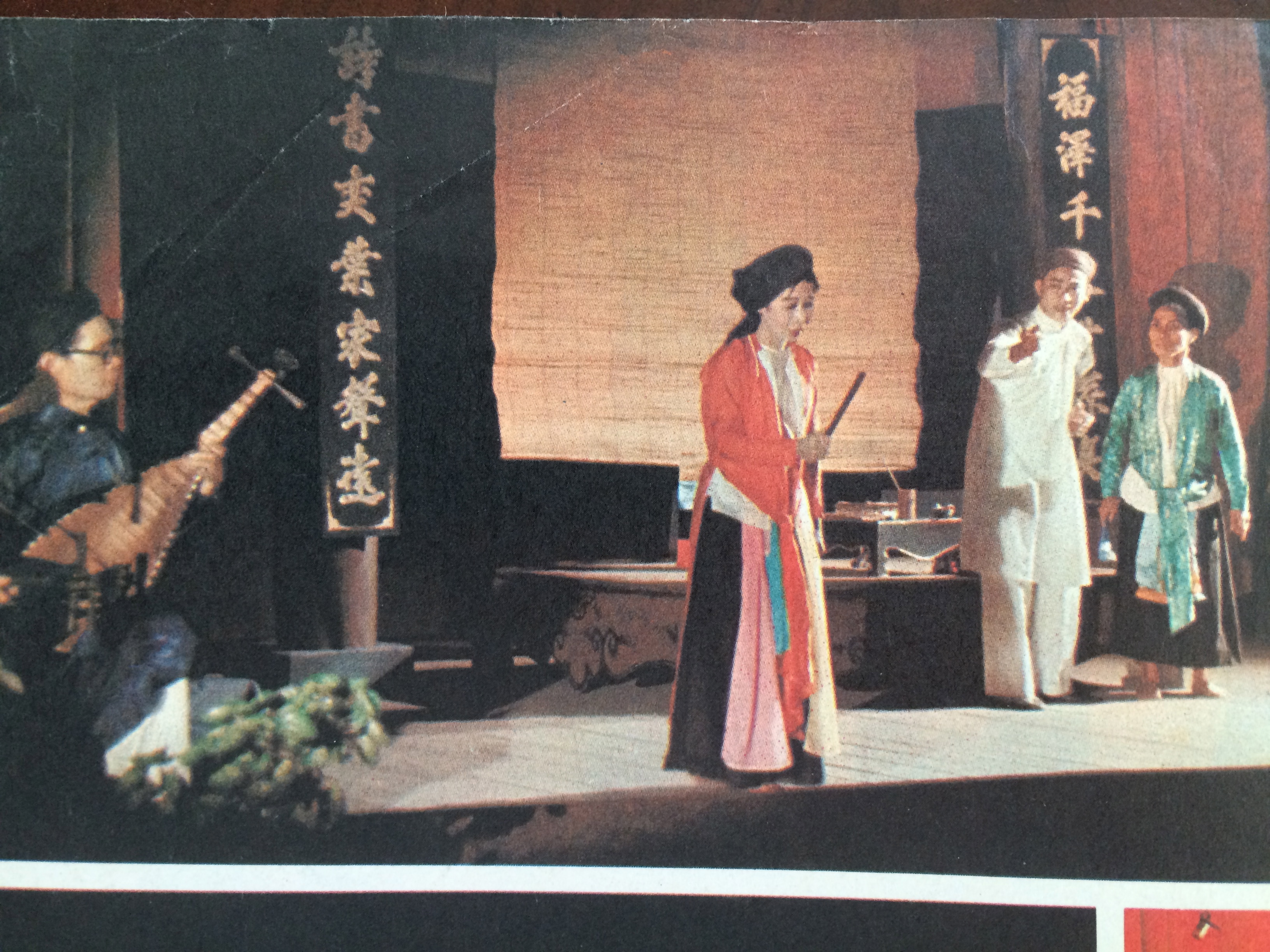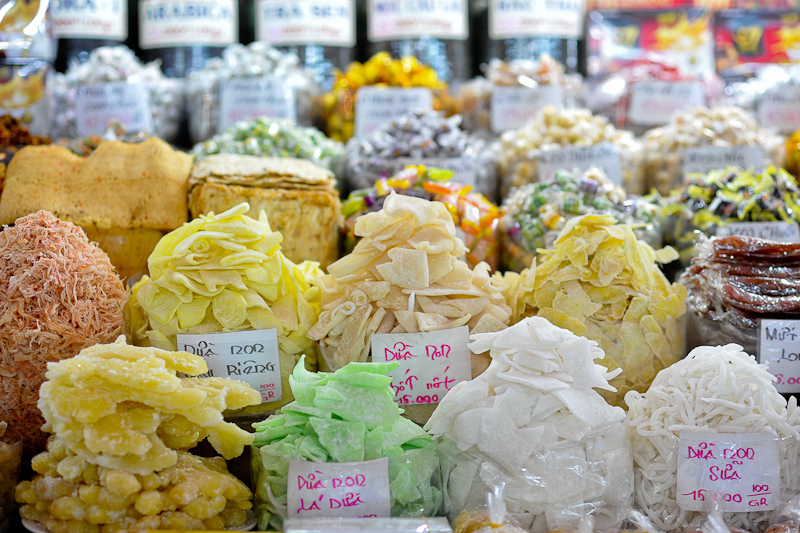|
Chèo
Chèo (, Chữ Nôm: 嘲) is a form of generally satirical musical theatre, often encompassing dance, traditionally performed by Vietnamese peasants in northern Vietnam. It is usually performed outdoors by semi-amateur touring groups, stereo-typically in a village square or the courtyard of a public building, although it is today increasingly also performed indoors and by professional performers. Chèo stage art is one of the great cultural heritage of the Vietnamese folk treasure. Chèo has been a popular art form of the Vietnamese people for many generations and has fostered the national spirit through its lyrical content. ''Hát chèo''s origins date to the 12th century during the Lý dynasty and has existed in its present form since roughly the 16th century. It derives from folk traditions, and was orally transmitted; unlike courtly theater traditions, it employs no scenery and sparse costumes and makeup. It involves a combination of traditional set pieces and improvisational ... [...More Info...] [...Related Items...] OR: [Wikipedia] [Google] [Baidu] |
Vũ Trinh
Vũ Trinh ( vi-hantu, 武楨; 1759–1828) (pseudonyms 萊山 and 蘭池漁者) was a prominent scholar, official, and writer at the end of the Lê dynasty and the beginning of the Nguyễn dynasty. Biography & Family Background Courtesy name and literary pseudonyms: Courtesy name Duy Chu; literary pseudonym Lan Trì Ngư Giả (“The Fisherman of Orchid Pond”). For a brief period, he became a Buddhist monk under the Dharma name Hải Âu Hòa Thượng and composed Trúc Lâm Tông Chỉ Nguyên Thanh, a work highly regarded in Buddhist studies. Vũ Trinh was the author of many classic Chèo plays in the history of Vietnamese performing arts. Vũ Trinh was born in 1759 in Xuân Lan commune, Kinh Bắc region (present-day Ngọc Quan village, Lâm Thao commune, Bắc Ninh province). Scholarly lineage: Grandfather: Vũ Miên, who passed the Hội nguyên (first laureate of the metropolitan exam), served as Chancellor, Rector of the Imperial Academy, and Chief Historian under ... [...More Info...] [...Related Items...] OR: [Wikipedia] [Google] [Baidu] |
Sáo
The ''sáo'' (also called ''sáo trúc'' — pronounced , like "''shall-joog"'') is a family of flutes found in Vietnam, considered a symbol of rural Vietnam. ''Sáo'' is the literal Vietnamese word for "flute". The most common variety is played with the flutist holding the ''sáo'' transversely to the right side with their mouth placed at the blowing hole. Other varieties include the ''Sáo Dọc'', a kind of recorder similar to the Thai Khlui, the ''Sáo Bầu'', and the ''Sáo Ôi'', a recorder played by the Muong people. The ''sáo'' is usually performed solo or in an ensemble among other instruments in orchestras of Vietnamese popular opera Chèo, Chầu văn, and Nhã nhạc. Construction and materials Most frequently made from a single piece of bamboo, the ''sáo'' measures between 40 and 55 centimeters in length and 1.5 to 2 centimeters in diameter, with six or ten finger holes and a tuning slide. Located inside the bamboo tube, near the oval blowing hole, is a sof ... [...More Info...] [...Related Items...] OR: [Wikipedia] [Google] [Baidu] |
Vietnam
Vietnam, officially the Socialist Republic of Vietnam (SRV), is a country at the eastern edge of mainland Southeast Asia, with an area of about and a population of over 100 million, making it the world's List of countries and dependencies by population, fifteenth-most populous country. One of two communist states in Southeast Asia, Vietnam shares land borders with China to the north, and Laos and Cambodia to the west. It shares Maritime boundary, maritime borders with Thailand through the Gulf of Thailand, and the Philippines, Indonesia, and Malaysia through the South China Sea. Its capital is Hanoi and its largest city is Ho Chi Minh City. Vietnam was inhabited by the Paleolithic age, with states established in the first millennium BC on the Red River Delta in modern-day northern Vietnam. Before the Han dynasty's invasion, Vietnam was marked by a vibrant mix of religion, culture, and social norms. The Han dynasty annexed Northern and Central Vietnam, which were subs ... [...More Info...] [...Related Items...] OR: [Wikipedia] [Google] [Baidu] |
Trống Cơm
Trống cơm (lit. "rice drum") is a kind of traditional barrel-shaped Vietnam, Vietnamese drum, bearing similarities to the Chinese yaogu, and the Khmer skor sang na. It is an integral instrument in the hát bội orchestra and is also featured prominently in the Hát chèo repertoire. The ''trống cơm'' is a long, cylindrical drum with percussion surfaces on both ends. When stationary, it is positioned horizontally in front of the performer, who strikes the drumheads with their hands. Alternatively, drumsticks may be used. For performances that involve movement, the drum is slung over the shoulders with a sash, resting horizontally across the performer's abdomen, allowing it to be played on the go. The drum derives its name, "rice drum," from the practice of smearing a layer of cooked rice onto its surface for tuning purposes. This technique is similar to the methods used for tuning drums in Cambodia and Thailand. The two drumheads are traditionally tuned five notes apart, cre ... [...More Info...] [...Related Items...] OR: [Wikipedia] [Google] [Baidu] |
Đình
Đình (Chữ Hán: 亭 or 庭) or Vietnamese communal houses are typical of buildings found in Vietnam villages, dedicated to worship the village god, Thành hoàng Thành hoàng ( vi-hantu, 城隍) or Thần hoàng (神隍), Thần Thành hoàng (神城隍) refers to the gods or deities that are enshrined in each village's Đình in Vietnam. The gods or deities are believed to protect the village from natural ..., the village founder or a local hero. They also play the role as a meeting place of the people in the community, akin to modern civic centers. Gallery File:Nội thất đình Mỹ Phước.jpg, Interior of đình Mỹ Phước Image:Dinhlang.jpg, Đình Nam Thanh in Huế Image:BangMonDinh.JPG, Đình Bảng Môn in Thanh Hóa Province Image:Dinh lang Vi Da.jpg, Đình Vỹ Dạ in Huế File:Đình làng Tử đôi 01072009381.jpg, Đình Tử Đôi, Hải Phòng Image:Đình làng Dư Khánh, Ninh Thuận, di tích cấp quốc gia 1999.jpg, Đình Dư Khánh, ... [...More Info...] [...Related Items...] OR: [Wikipedia] [Google] [Baidu] |
Chinese Poetry
Chinese poetry is poetry written, spoken, or chanted in the Chinese language, and a part of the Chinese literature. While this last term comprises Classical Chinese, Standard Chinese, Mandarin Chinese, Yue Chinese, and other historical and vernacular forms of the language, its poetry generally falls into one of two primary types, Classical Chinese poetry and Modern Chinese poetry. Poetry is consistently held in high regard in China, often incorporating expressive folklore, folk influences filtered through the minds of Chinese literati. Poetry provides a format and a forum for both public and private expressions of deep emotion, offering an audience of peers, readers, and scholars insight into the inner life of Chinese writers across more than two millennia. Chinese poetry often reflects the influence of China's various religious traditions. Classical Chinese poetry includes, perhaps first and foremost ''Shi (poetry), shi'' (詩/诗), and also other major types such as ''Cí (poet ... [...More Info...] [...Related Items...] OR: [Wikipedia] [Google] [Baidu] |
Lục Bát
Lục bát (, ) is a traditional Vietnamese verse form – historically first recorded in Chữ Nôm script. "Lục bát" is Sino-Vietnamese for "six-eight", referring to the alternating lines of six and eight syllables. It will always begin with a six-syllable line and end with an eight-syllable one. A related measure is the Song thất lục bát. Unlike other verse forms which are traditionally enjoyed only by high-class Vietnamese, lục bát is traditionally composed and enjoyed by people of all classes, from the lowly peasants to the noble princes. It can be regarded as a living style of Vietnamese people. The rich treasure of Vietnamese folk poems (ca dao), which consists of hundred thousands of verses that reflect on life, morality, human relationships, and natural beauty, is almost entirely composed in lục bát form. The 3774 verses in "Đại Nam Quốc Sử Diễn Ca" (chữ Hán: 大南國史演歌; Epic Song of National History) composed by Vietnamese poet Lê Ngô ... [...More Info...] [...Related Items...] OR: [Wikipedia] [Google] [Baidu] |
Tết
Tết (, ), short for (; ), is the most important celebration in Vietnamese culture. Tết celebrates the arrival of spring based on the Vietnamese calendar and usually falls on January or February in the Gregorian calendar. is not to be confused with Tết Trung Thu, which is also known as Children's Festival in Vietnam. "'" itself only means festival but it would generally refer to the Lunar New Year in Vietnamese, as it is often seen as the most important festival amongst the Vietnamese and the Vietnamese diaspora, with regarded as the second-most important. Vietnamese people celebrate annually, which is based on a lunisolar calendar (calculating both the motions of Earth around the Sun and of the Moon around Earth). Tết is generally celebrated on the same day as Chinese New Year (also called Spring Festival), with the one-hour time difference between Vietnam and China resulting in the new moon occurring on different days. Rarely, the dates of Vietnamese and Chine ... [...More Info...] [...Related Items...] OR: [Wikipedia] [Google] [Baidu] |
Lê Thánh Tông
Lê Thánh Tông (黎聖宗; 25 August 1442 – 3 March 1497), personal name Lê Hạo, temple name Thánh Tông, courtesy name Tư Thành, was an emperor of Đại Việt, reigning from 1460 to 1497, the fifth and the longest-reigning emperor of the Later Lê dynasty, and is widely praised as one of the greatest emperors in Vietnamese history. He came to power through a coup d'état against his second brother Lê Nghi Dân in 1460. His reign is recognized for the extensive administrative, military, education, and fiscal reforms he instituted, conquests of Champa states and expansion of Đại Việt territory in the south, and a cultural revolution that replaced the old aristocracy with a generation of literati scholars. His reign was later praised as the Prospered reign of Hồng Đức (''Hồng Đức Thịnh trị;'' 洪德盛治). Name Lê Thánh Tông is known by several names, including his birth name Lê Hạo (黎灝), his courtesy name Tư Thành (思誠), pseud ... [...More Info...] [...Related Items...] OR: [Wikipedia] [Google] [Baidu] |
Chữ Nôm
Chữ Nôm (, ) is a logographic writing system formerly used to write the Vietnamese language. It uses Chinese characters to represent Sino-Vietnamese vocabulary and some native Vietnamese words, with other words represented by new characters created using a variety of methods, including phono-semantic compounds. This composite script was therefore highly complex and was accessible to the less than five percent of the Vietnamese population who had mastered written Chinese. Although all formal writing in Vietnam was done in classical Chinese until the early 20th century (except for two brief interludes), chữ Nôm was widely used between the 15th and 19th centuries by the Vietnamese cultured elite for popular works in the vernacular, many in verse. One of the best-known pieces of Vietnamese literature, '' The Tale of Kiều'', was written in chữ Nôm by Nguyễn Du. The Vietnamese alphabet created by Portuguese Jesuit missionaries, with the earliest known usage occurring ... [...More Info...] [...Related Items...] OR: [Wikipedia] [Google] [Baidu] |



